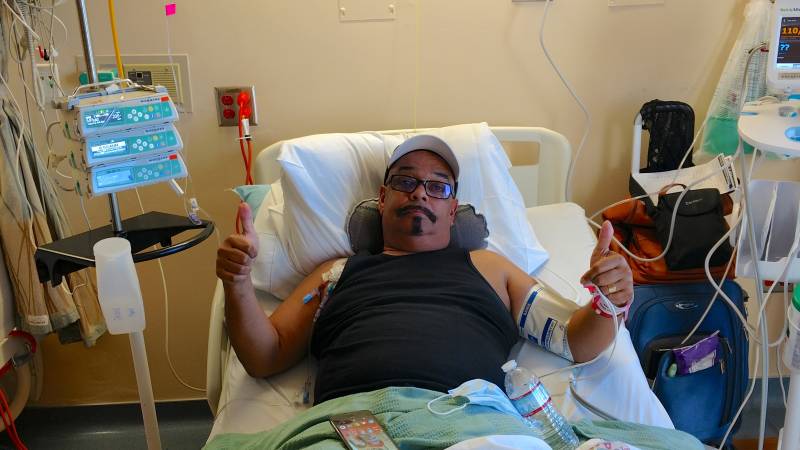LOMA LINDA, CA — January 11, 2018 — The first adult bone marrow transplant has been successfully completed at Loma Linda University (LLU) Health.
The patient, Merlin Decoud, from Moreno Valley, was successfully transplanted on Dec. 7, 2017.
“Every step of the way we could not have asked for better people here,” Decoud said. “Cancer is a terrible thing to experience but Loma Linda has been a great experience.”
Otherwise a healthy man, Decoud said he had never been in the hospital — until last July. He was walking toward his home after work one evening and experienced pain like he had never felt before in his back, “I grabbed hold of a tree to keep from falling,” he recalled.
After visiting the emergency department at LLU Medical Center, an MRI scan showed he had a broken back and a tumor — he had multiple myeloma and needed a bone marrow transplant.
LLU Cancer Center began offering adult bone marrow transplant (ABMT) in November and is the only medical facility in the Inland Empire region to offer it.
The ABMT program at LLU Cancer Center offers autologous stem cell transplantation, which uses the patient’s own blood stem cells to replace the diseased bone marrow.
Omair Kamal, MD, medical director for the ABMT program said the purpose of stem cell transplant is to make it possible for patients to receive high doses of chemotherapy for their cancer and then rescue the bone marrow by getting back their own stem cells.
“Because of the advances in post-transplant supportive care,” Kamal said, “autologous transplant can be a successful treatment choice for patients with different types of diseases especially with relapsed/refractory non-Hodgkins lymphoma and multiple myeloma.”
Stem cells are young cells that grow in the bone marrow, and the various types of blood cells are derived from these cells.
Once stem cells are collected, they are processed, stored and then given back to the patient through a central line catheter after high dose chemotherapy. The stem cells will circulate through the blood and settle in the bone marrow where they will repopulate the empty marrow.
Blood counts typically recover in three to four weeks. The patient will remain in the hospital until count recovery. After transplant, the patient will be followed closely requiring frequent medical check-ups, housing close to the medical center, and a reliable caregiver.
According to Kamal, the success of the ABMT relies heavily on the entire team. “This would not be possible without the collaborative efforts of the entire in-and out-patient teams.”
A sprightly Decoud, along with his wife Tonrie, recently visited the Cancer Center to receive IV hydration, which is a standard protocol for post-transplant patients.
“I’m doing extremely well,” he said. “I thank God every day for Loma Linda. They saved my life.”



